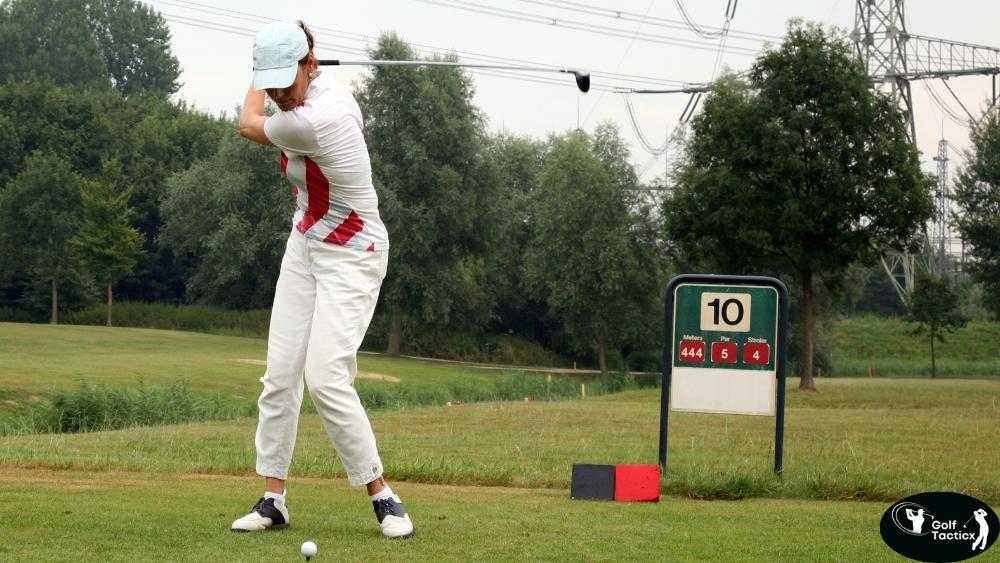If you’re struggling to read greens and can’t figure out why your putts keep missing the cup, don’t worry you’re not alone. Reading the break is one of the most challenging aspects of putting, especially for beginners.
In our previous post, we explored how tour professionals read greens with precision, a skill that takes time and training. As a professional golfer, I’ve spent countless hours on the green, and one thing I can confidently tell you is that your eyes need training just like your swing or short game.
In this article, I’ll break down everything you need to know about training your eyes to see break more effectively. Whether you’re just starting or want to take your putting to the next level, these strategies will help you become more confident and consistent on the green.
You’ll also discover practical tips, visual drills, and routines that can sharpen your green-reading skills. How to Train Your Eyes to Read Breaks in Golf isn’t just about theory, it’s about building habits that work under pressure.
With consistent practice and a focused approach, you’ll start seeing the subtle slopes and grain patterns that were once easy to miss. By the end, you’ll have a clear idea of how to train your eyes to read breaks in golf and make more putts with purpose.
Why Training Your Eyes Matters in Putting
Reading a green isn’t just about guessing or hoping the ball breaks left or right. It’s about training your eyes and brain to analyze slopes, grain direction, moisture, and speed. If your eyes aren’t dialed in, even the perfect stroke won’t help you sink more putts.
As a beginner, you might feel overwhelmed when looking at the slope. But with the right techniques, tools, and practice, you can develop the ability to read greens with precision. And once you can accurately read the break, your confidence on the greens will skyrocket.
Let me guide you through some key ways to train your eyes to read breaks effectively.
Top Techniques to Train Your Eyes to See the Break
Here are some beginner-friendly techniques that I personally recommend:
Start From the Low Side of the Hole
- Always walk to the low side of the hole.
- From this angle, your eyes naturally detect the slope better.
Use the Feet Feel Method
- While walking the line, feel the slope under your feet.
- Your body can often detect subtle breaks that your eyes might miss.
Read From Multiple Angles
- Don’t rely on just one angle. Look from behind the ball, behind the hole, and side-on.
- Each viewpoint tells a different part of the story.
Squat Low for a Ground-Level View
- Lower your eyes to almost grass level to better visualize the contour.
- You’ll notice minor tilts that could completely change your read.
Use Your Putter as a Plumb Line
- Hold your putter vertically in front of your dominant eye.
- This trick helps you gauge if a putt is straight or breaking.
Practice With Training Aids
- Use a putting mirror or chalk line to visualize break and aim.
- Many pros still rely on these tools during practice.
Visualize a Water Flow
- Imagine water pouring down the green where would it flow?
- This simple visual often reveals the dominant break.
Follow the Ball Roll After Each Putt
- Observe how your ball reacts on missed putts.
- Replay the break in your mind and adjust your next read accordingly.
Practice With Purpose
Training your eyes isn’t something that happens overnight. You need structured, purposeful practice. Spend time on different greens, challenge yourself with various slopes, and track how accurate your reads are. You’ll be surprised how quickly your eye improves when you put in the reps.
Eye Training Drills for Green Reading
Here’s a table of simple but highly effective drills you can try during your putting practice:
| Drill Name | Purpose | How to Do It |
| Low-to-High Read Walk | Detect slope visually | Walk from low side to high side of hole and observe tilt from different angles. |
| Coin Roll Drill | Focus on break curvature | Roll coins on a sloped green to see where they curve off-line. |
| Mirror Perception | Train alignment and slope view | Use a putting mirror to align yourself and observe slope direction. |
| Line-to-Break Drill | Master break and aim | Lay down a chalk line and adjust to see how putts break relative to it. |
| Water Flow Visualization | Build visual imagination for slope direction | Use a bottle of water and pour gently on the green to visualize break patterns. |
Visual Cues to Watch For on the Green
Next, let’s go over a few visual cues that I personally look for when reading a green. As a beginner, these cues can help you make more accurate reads without overthinking it.
Look for Shiny vs. Dull Grass
- Shiny grass usually means you’re putting with the grain (faster).
- Dull grass indicates against the grain (slower).
Notice Any Drainage Patterns
- Greens are built with drainage in mind.
- Find the nearest low point or drain to help determine break direction.
Watch Other Putts
- If you’re in a group, pay attention to others’ putts.
- Learn from their break even if your line is slightly different.
Use the Shadow Method
- Shadows cast by contours on the green can subtly indicate break direction.
- This works especially well during early morning or late afternoon rounds.
Slope Relative to Surrounding Terrain
- Many greens tilt in relation to nearby water bodies or slopes.
- Trust your surroundings they often hint at subtle breaks.
Tips to Improve Break Recognition
Here’s a table of professional tips that have helped both me and many others I’ve coached:
| Pro Tip | Why It Helps |
| Walk around the hole before every putt | Offers a complete view of slope and subtle contours |
| Keep your eyes relaxed not fixed | Allows your peripheral vision to pick up slope better |
| Trust your first instinct | Over-analysis usually leads to misreads |
| Visualize your putt from start to finish | Helps your brain commit to the break line |
| Practice short breaking putts regularly | Builds confidence in handling curved lines |
| Log your misreads in a notebook | Learn from mistakes and spot consistent errors in perception |
Conclusion
Reading the break is part science, part art. As a beginner, don’t stress if it doesn’t come naturally right away. I’ve played with golfers at every level, and the difference between good and great often comes down to how well they read greens. Train your eyes every round, and treat each putt as a learning opportunity.
If you’re committed to improving your putting game, start by using these techniques and drills. You’ll soon begin to train your eyes to see the break more effectively, and your putts will start to drop with more consistency. And remember, it’s not just about seeing the break but trusting it.
Every great putter you see on tour has put in the work to train their eyes to read breaks in golf. You can too. In our next post, we’ll dive into Mastering Speed Control in Putting, a crucial skill that works hand in hand with how to train your eyes to read breaks in golf to elevate your performance.
















Leave a Reply